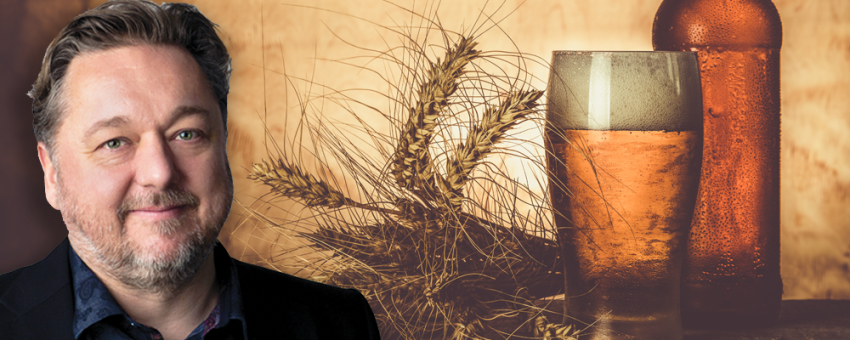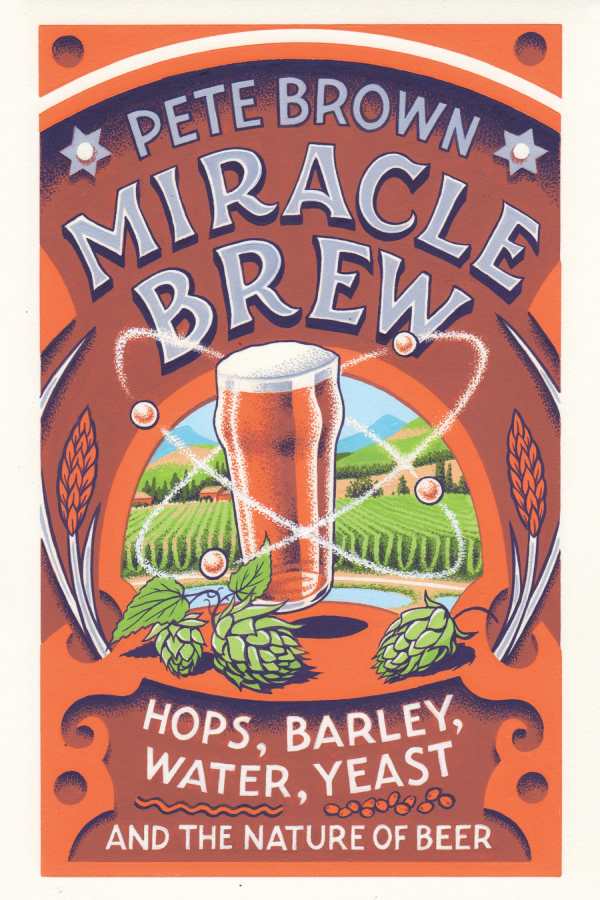World's Greatest Beverage? It's Gotta Be Beer

Interview with Pete Brown, Author of Miracle Brew: Hops, Barley, Water, Yeast and the Nature of Beer.
Beer! Bring me a beer. But nothing limp and insipid, sir. Something fresh, something bright—an ale that goes with my hat, yes that! Or, an IPA that hints of Calcutta. A raspberry lambic from Belgium. Weissbier, porter, brown, stout. That’s what it’s all about. But nothing limp and insipid, sir.
Yes, beer in the 21st century is nothing if not international. It’s hipster, cosmopolitan, grunge, and easy going—all at once. The American craft brew phenomenon brought innovation and attitude, while Europe’s proud brewing traditions lend a sense of polish and refinement. Beer lovers are living in a golden age.

And no one has kept apace with the happenings better than Pete Brown, author of the recently released Miracle Brew: Hops, Barley, Water, Yeast and the Nature of Beer, which presents “a complete natural history of beer and emphasizes the importance of place—or terroir—that each ingredient brings to the finished glass.” In fact, in the past dozen years, Brown has written five+ books on beer, pubs, and cider, and twice has been named Beer Writer of the Year.
Traveling the world as a preeminent beer authority must have a downside or two, but we were driven to interview Brown out of pure, bald-faced envy. Thankfully, he didn’t rub it in too much.
In the spirit of New Year, New You, let’s talk about the health properties of beer. We all know Guinness was marketed as “good for you” in former days, and other beers touted health benefits, as well. And, there does seem to be some good yeast/flora in certain beers that help with our gut bacteria. So, rationalizations aside, what gives? Will beer help me live to 120, and give me six-pack abs?
Ah, it’s a tricky one this! The thing is, beer does have genuine health properties, but of course it has potential detrimental health effects too. Any health benefits beer does have only apply when drunk in moderation, which is important to remember, and it does vary depending on your diet, your body mass, your experience of drinking, your patterns of drinking, and a whole bunch of other stuff. OK, so having said that, beer is full of B vitamins. It’s nutritious, which is why it was a vital part of our diet when food was hard to come by. It’s been proven to lower blood pressure and can be a factor in preventing heart disease and strokes. But like I say, those benefits are outweighed if you drink too much!
One of the many great surprises about Miracle Brew is the seamless way you talk about the beer industry in the course of talking about beer’s more esoteric attractions. It’s especially interesting to hear about some of the great indie brewers and innovators scattered around the world. Beer, after all, is business, but in many ways, it does seem like an enlightened, hip, ethical industry. Did you find this to be the case, in your research and travels?
I think this is exactly why beer pulls so many people in towards it. It’s a movement as much as an industry. When I became a beer writer, I gave up a very lucrative but soulless job and I now earn less than I did twenty years ago, but am far happier, and I know many other people in the industry with a similar story. At the top end are big corporations that differ little from their counterparts in baked goods or pet food. But below that, you had people who are genuinely passionate about the product they make, and the experiences that product creates around itself. Beer is such a sociable drink, because the curve of inebriation is slow so you get that nice buzz and you can have a few and extend that buzz without getting too drunk. On top of that, it’s a natural product, one that is steeped in tradition, has different, fascinating aspects around the globe, and a wider array of flavours than any other drink. It always has something more to give, and it’s always best enjoyed with friends.
In your fascinating chapter on water, you write: “Water, so simple on the surface, is arguably the most technical and difficult-to-understand element in beer.” In addition, you describe the highly-valued springs and water sources for some of the world’s most acclaimed breweries. Can you give us a sense of the different types of water and how those qualities impact various types of beer?
We think of water as just being plain old H20, but by the time it’s drawn from a spring or well, there’s a lot more going on with it. After it falls as rain, water picks up attributes from the soil, rock and shale it flows through. So by the time it reaches the brewery, it could be either hard or soft, alkaline or acidic, and may have high or low concentrations of various minerals. All these affect the character of the beer brewed with it, and different compositions suit different beers. The soft, almost mineral-free water of Pilsen, Czech Republic is perfect for a light, crisp lager, whereas the sulphate-heavy water of Burton-on-Trent, England is ideal for India Pale Ale. I realized the composition of water played a huge role in determining why our classic beer styles developed in the places they did.
Crazy to think that for many thousands of years, vintners and brewers had no clue about yeast. In their minds, alcohol was truly a spontaneous gift from the gods. Louis Pasteur and others changed that 150 years ago, and since, we’ve learned about the importance of fermentation in many foods, and know about thousands of strains of yeast. In my mind, yeast puts the “miracle” in brew. Can you talk about some of the interesting things we know and don’t yet know about yeast?
That’s at least one book all in itself! Even as I was working on my final amends on the manuscript for Miracle Brew, new studies came to light about the history of cultivated yeast, and I had to change what I’d written. The invention of microscopes saw us get the first clue about yeast, but it took centuries from then until Pasteur used the microscope to begin to understand the behaviour of micro-organisms and basically invent the discipline of microbiology, which has gone on to save thousands if not millions of lives. In the 21st century, genome mapping has given us the next great leap forward in understanding how yeasts work. So far this has been used to calculate the evolution of yeast based on its average lifespan and the number of generations it goes through, and scientists think they’ve pinpointed the time when brewers unwittingly began to ‘train’ and domesticate yeast, helping it adapt to the environment of the brewhouse. But the scope of work that’s yet to be done is best summed up for me by the tale I was told of a yeast strain that’s been discovered in leaf cutter ant colonies in Central America, and hasn’t been found anywhere else except in the sea off Portugal. Why? How?
Alright, I’d be remiss if I didn’t ask you about the current, giggle-filled experimentation with cannabis in beer making. Can you give us a sense of what these intrepid brewers are doing, and what’s on the horizon, as it relates to brewed marijuana?
Not much I’m afraid! We have no cannabis legalisation in the UK yet, so we’re behind the curve. There is a fit, because the hop and the cannabis plant are close relatives, but hops don’t contain the psychoactive element. Maybe I’ll look into it next!
With nearly ten beer/cider/brewpub books behind you, have you exhausted the genre you did so much to introduce to the book industry? What are you working on now, and what interests you for future projects?
I don’t think I’ve exhausted it yet. The thing I love about beer is that it’s so universal, so tied to the history of civilization, that if you can think of a non-fiction genre then there’s a way in which it relates to beer and pubs. I’ve done history, travel writing, and now science and nature writing about beer. I have books on the politics, economics and philosophy of beer. I have a book of poetry about pubs. There’s always something new to look at. But at the same time, I’m working with publishers who would like me to apply my tone and approach to other subjects. I’m currently writing a book about Britain’s favourite food—why it’s so iconic, and what it says about us culturally. So today I’m taking my approach to beer and applying it to fish and chips!
Matt Sutherland
